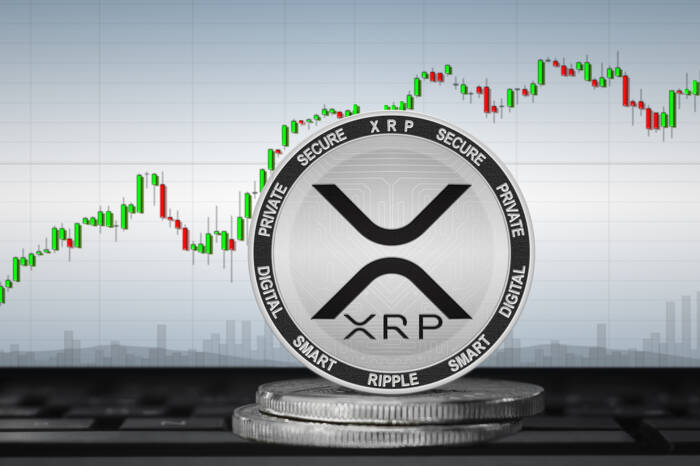Summary:
Bitcoin's transformation from a subversive tool to a mainstream asset has sparked debates over cypherpunk ideals.
Monero is viewed as the true heir to the cypherpunk movement due to its strong focus on privacy.
Monero's resilience is evident as its market cap exceeds $4 billion post delistings.
The bifurcation of the cypherpunk dream showcases the coexistence of Bitcoin's institutional approach and Monero's privacy-centric model.
The evolution of cryptocurrencies reflects a multi-faceted challenge to state monetary control.
Bitcoin, once the rebel flag-bearer of the cypherpunk movement, now finds itself embraced by the institutions it was designed to circumvent. Meanwhile, Monero, operating in the shadows of the crypto ecosystem, is viewed by its advocates as the true heir to the original cypherpunk movement: though this commitment to privacy has come at a significant cost.

The transformation of Bitcoin from a subversive instrument to a mainstream financial asset represents one of the most remarkable institutional pivots in financial history. Today, we live in a world where Bitcoin ETFs trade on Wall Street, and even U.S. Presidents champion its cause. The same cryptocurrency that once powered the infamous Silk Road marketplace now serves as a respectable investment vehicle, complete with institutional custodians and regulatory oversight.
Bitcoin for Wall Street, Monero for Darknet Markets?
This institutionalization of Bitcoin, while validating its economic importance, has sparked debate within the cryptocurrency community: Has Bitcoin's mainstream success come at the cost of its original cypherpunk ideals? For privacy advocates, Monero represents an answer to this question, positioning itself as the spiritual successor to Bitcoin's early anti-establishment roots.
To its proponents, Monero's story demonstrates that the original cypherpunk spirit of cryptocurrency isn't just surviving – it's evolving. While Bitcoin has become increasingly transparent and traceable, Monero has doubled down on privacy features that make it practically impossible to trace fund movements across its blockchain. This commitment to privacy hasn't come without consequences.
Throughout 2023 and early 2024, Monero faced a wave of delistings from major cryptocurrency exchanges. Kraken led the charge in 2021 by removing Monero for European users. OKX followed in December 2023, and in February 2024, Binance (the world's largest cryptocurrency exchange) delivered what many thought would be a killing blow by delisting Monero alongside other privacy-focused tokens. The immediate impact was severe: Monero's price crashed by a third within 24 hours of Binance's announcement.
Monero’s Price Demonstrates Resilience
Yet, something remarkable has happened since. Instead of fading into obscurity, Monero demonstrated remarkable resilience. Its current market capitalization of over $4 billion, while not at all-time highs, represents significant organic growth since the delistings. As of writing, Monero’s price is currently over $200 dollars, almost double what it was after the Binance delisting. This resilience suggests that Monero's value proposition extends beyond speculative trading – it serves a genuine market need for financial privacy.
The parallel trajectories of Bitcoin and Monero illuminate a crucial truth: cryptocurrencies are executing a multi-pronged disruption on the traditional financial system. While Bitcoin charts a course through institutional adoption and mainstream acceptance, Monero maintains its focus on the fundamental cypherpunk principle of privacy. Both approaches appear viable, serving different but equally important purposes in the broader cryptocurrency landscape.
Monero's persistence despite institutional rejection demonstrates that the original cypherpunk dream of cryptocurrency, as a tool for financial privacy and freedom from institutional control, remains very much alive. Its continued use in privacy-critical scenarios, from darknet markets to dissident funding, suggests that there remains a substantial demand for truly private digital transactions, even in the face of increasing regulatory pressure.
This dichotomy between Bitcoin and Monero might actually represent the natural evolution of the cryptocurrency ecosystem rather than a contradiction. Bitcoin's mainstream adoption helps legitimize cryptocurrency as a concept, while Monero preserves the privacy-focused principles that sparked the cryptocurrency revolution in the first place.
The Bifurcation of the Cypherpunk Dream
The cypherpunk dream, it seems, hasn't died: it's bifurcated. Bitcoin has evolved to become a bridge between the cryptocurrency world and traditional finance, while Monero has emerged as the standard-bearer for the original cypherpunk vision of private, censorship-resistant digital money. This diversification might ultimately prove healthier for the ecosystem than if either vision had completely dominated the other.
As we look to the future, this dual evolution suggests that the cryptocurrency space is mature enough to support multiple, seemingly contradictory visions simultaneously. The success of both Bitcoin's institutional path and Monero's privacy-focused approach demonstrates that different cryptocurrencies can coexist while serving fundamentally different purposes. This is a reality that both regulators and market participants will need to grapple with in the years to come.
Perhaps most remarkably, this diversification represents the profound success of Satoshi Nakamoto's original vision, though not in the way many might have expected. What began as a single challenge to state monetary control has evolved into a multi-faceted movement, with different cryptocurrencies confronting the monopoly of state money from various angles. Bitcoin challenges fiat currency's role as a store of value and investment vehicle, while Monero contests the state's ability to monitor and control financial transactions. Other cryptocurrencies have emerged to challenge different aspects of traditional finance, from smart contract platforms competing with traditional contract law to stablecoins competing with Eurodollars.
This proliferation of approaches wasn't just inevitable – it may have been essential. The goal of creating alternatives to state money was perhaps too complex, too multifaceted to be achieved by any single cryptocurrency. Instead, Satoshi's fundamental insight about the possibility of decentralized digital money has spawned an ecosystem of specialized tools, each attacking different aspects of the state's monetary monopoly. In this light, the divergence between Bitcoin and Monero isn't a dilution of the original cryptocurrency vision, but rather its natural and necessary evolution.






Comments